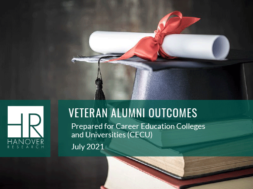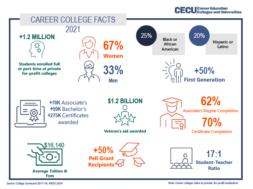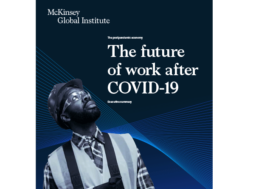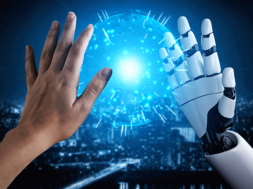
Millenials – The New Frontier
By Suzanne Morrison-Williams, EdD, Vice President – Academic Affairs, City College
Who are the Millennials?
Millennials also known as Gen Y, Gen Next, the Me Generation and Digital Natives currently comprise some 80 million within the U.S. population. Of that 80 million, 55.2 million are currently in the workforce and they are slated to be 75 percent of the workforce by 2020.1 Not since the Baby Boomers has a generation changed the face of the American landscape. They are vastly different from the Gen Xers who preceded them and are changing the way in which we do business, buy products and communicate. While many industries have quickly adapted to this force to be reckoned with, education continues to lag behind in its ability to cater to this new era for which they are wholly unprepared.
Millennials are the most educated generation. According to the PEW Research Center, some 63 percent of Millennials value a college educa tion and plan to get one. Of that number, 19 percent had already graduated from college and the remaining 44 percent planned to graduate from college. Some 27 percent of Millennial females and 21 percent of Millennial males had college degrees. This is in stark contrast to only 20 percent of Gen X females and 18 percent of Gen X males. An even further contrast is the comparison to the Baby Boomers of whom only 14 percent of females and 17 percent of males had degrees. Not only are they the most educated, but they are continuing the Gen X trend of more women earning degrees than men.
tion and plan to get one. Of that number, 19 percent had already graduated from college and the remaining 44 percent planned to graduate from college. Some 27 percent of Millennial females and 21 percent of Millennial males had college degrees. This is in stark contrast to only 20 percent of Gen X females and 18 percent of Gen X males. An even further contrast is the comparison to the Baby Boomers of whom only 14 percent of females and 17 percent of males had degrees. Not only are they the most educated, but they are continuing the Gen X trend of more women earning degrees than men.
However, with their increased levels of education; Millennials are now a generation in $1 trillion in student loan debt. Because the price  tag of education is now so high, Millennials have become very savvy about their education choices. Unlike previous generations who saw education as a rite of passage and an investment in their future, Millennials view education as an expense. More importantly, Millennials view education as an expense which is unnecessary unless it is going to lead them to an outcome, which they are actively seeking to achieve. So they will chose to not go to school until they find a good fit both for program as well as how they fit in culturally within the institution. This is a huge shift from prior generations.
tag of education is now so high, Millennials have become very savvy about their education choices. Unlike previous generations who saw education as a rite of passage and an investment in their future, Millennials view education as an expense. More importantly, Millennials view education as an expense which is unnecessary unless it is going to lead them to an outcome, which they are actively seeking to achieve. So they will chose to not go to school until they find a good fit both for program as well as how they fit in culturally within the institution. This is a huge shift from prior generations.
Because Millennials view education as an expense, the price point of an education has become very critical to their choices. They will shop around and look at which institution will give them the best value proposition for what they are seeking. According to data analytics on some 250,000 high school students performed by Rally Cap, Inc., for the first time in years, many high school students (who are technically Generation Z) and their older siblings are viewing nontraditional education as viable and more attractive than traditional higher education. They are seeking technical hands-on education that will lead them to employment.
Millennials and the skills gap
Yet, even with all their education, Millennials are unable to find jobs which pay them adequately because Baby Boomers are remaining in the workforce well into their late 60s and 70s, eschewing retirement in order to continue to earn money for their later years. Millennials are, therefore, either forced to take jobs which do not take full advantage of their college education or work a single or multiple part-time jobs. With large student loan payments and chronic underpayment, returning home to live with parents is often the only financial option many Millennials have.
This Millennial under-employment situation, however, is even more complicated when you look at all the factors.
Unlike previous generations, Millennials employment tenure at a job is usually 24 to 36 months.They stay long enough to learn the job and the industry and learn the required skills for that role.
They then begin looking for the next job and role. When compared with Baby Boomers who stayed with an organization for 20 to 30 years and Gen Xers who would average about 7 to 10 years, many employers find this shift in employee behavior a bitter pill to swallow. This shift in employer behavior has helped to exacerbate the skills gap in the marketplace.
So here is the vicious cycle.
- Technology is changing faster than some employees and employers can keep up with. Educational institutions are challenged to maintain current when technology changes every 18 months. As a result, when a person leaves school, the technology which they learned is often no longer the industry standard. Unless they’ve been trained on how to teach themselves, employers will need to engage in ongoing on the job training (OJT) in order to maintain a skilled workforce.
- Employers, however, will not provide on the job training because Millennials do not stay longer than three years. Employers feel that they’ve invested 12 months in training for which they will only have 18 to 24 months of performance. Many employers are disappointed with this ROI. So rather than invest in that employee, employers would rather hire a fully trained staff member. This is really a no-win for the employer because technology is changing faster than the rate at which employees move. Employers must provide training to current staff if they wish to remain market current and relevant.
- These fully trained staff members which employers seek do not exist. This then creates a skill gap in the workforce. A skills gap that, according to the Bureau of Labor Statistics, as of April 2016 resulted in 5.8 million open jobs within the United States.2
So points 1 to 3, when put together, creates a skills gap that many employers blame on Millennials being lazy or lacking soft skills, which is really only half true. Many Millennials simply don’t have the opportunity to participate fully in the labor market. When Millennials apply online for a job and a software program which is looking for 100 percent compatibility and their resume only meets 90 percent, they are never asked to come in for an interview. So in this case technology is actually hurting the employer who is probably overlooking a skilled worker, who with a few training sessions and mentoring could fill the role within their organization for at least 24 to 36 months.
How to engage millennial students and employees
There are specific hallmarks of the Millennial generation and schools and employers need to understand these hallmarks if they are to be successful in interacting and retaining these individuals as either students or employees. The hallmarks are as follows:
- The use and implementation of technology in all facets of their life
- The prevalence of social media and how they interact with it
- The need to have a greater meaning in the job that they do and to work for organizations who have a positive impact on the world through either their product, service or corporate responsibility
- The ability to incorporate collaboration and teamwork into their work environment
- The ability to be mentored by persons who are experts or seen as someone with referent power
- The need to have a flexible work that accommodates their need to have a greater level of life balance
Employers and educational institutions must recognize that these are the values of Millennials; and their brands and enterprises cannot survive if they do not understand these as a key psychographic of this demographic and adjust accordingly. Most industries have taken great pains to understand this new demographic and have tailored advertising campaigns and products to cater to this new generation. One only has to watch HGTV and shows like Tiny House Hunters and Tiny House, Big Living3 to see how very different Millennials are. The premise of this show is that Millennials have scaled down their lives so that they have more time to spend with their families or pursuing things other than employment in order to make huge house payments. Some of them live in spaces as small as 300 to 400 square feet.
Millennials are in increasing numbers removing themselves from conspicuous spending and spending time focusing on things such as green living, conservation and sustainability.
This is a generation that is highly concerned with the environment, social equality and social justice. They are much less conservative than previous generations and embrace differing genders, races, ethnicities, religions and sexual orientations with much more ease than previous generations. They value experiences and so they like to travel, volunteer and do things which make them feel better about themselves because they are serving a greater purpose than themselves.
This is a generation that has been labelled as lazy, but they are not. They simply are motivated to work on things which interest them. They see little value in simply doing something unless it’s adding value to something they see value in. They are labelled as spending all their time playing on their phones or video games. What many fail to realize is that these behaviors give them inherent skill sets which need to be properly harnessed and utilized. They are extremely comfortable with technology, hence their name digital natives. They grew up with phones, tablets and the Internet. Information was always readily available to them. Unlike previous generations, technology does not scare them. They expect to have technology incorporated into their work and learning. They went to classes online in high school; computers and tablets were a part of their formative learning; and they use apps on their phone to complete a variety of tasks. Failure to use and implement technology will create a disconnect with this population.
With regards to their rampant video game playing – The rise of gaming is a global phenomenon with this generation. There are gaming tournaments and some colleges now offer scholarships and internships for gamers.4 The piece that most employers and schools miss with gaming is that these are young people who often live in different states, countries, time zones and speak different languages. Yet, they have created a means to work collaboratively across space and time in order to play together. This is an amazing feat of teamwork and collaboration that some governments have yet to manage. This is something to be lauded and utilized within the work and education environment and not seen as a hindrance to productivity or education.
Some organizations adapted to the Millennial lifestyle by operating a 24 hour enterprise rather than having staff members work a standard 8 hour day. Staff members came and went at their desired working hours and were paid based on project completion. So if a staff member completed a project in three months because they worked 6 day weeks of 10 hours each day, then they were rewarded and allowed to take time off until it was time for their next project. This allowed Millennials to work hard for short periods of time and then take vacations as rewards to themselves without having to worry about 8 hour days or only two weeks of vacation. Employers were rewarded with shorter production timeframes. Other Millennials who preferred a more standard time frame were allowed to work at their pace. This allowed each staff member to customize their work schedule without compromising production or output. A win-win for employer and employee.
Further testimony to Millennials’ lack of laziness is their desire to be self-employed. Some 54 percent of Millennials want to or have already started their own business. They 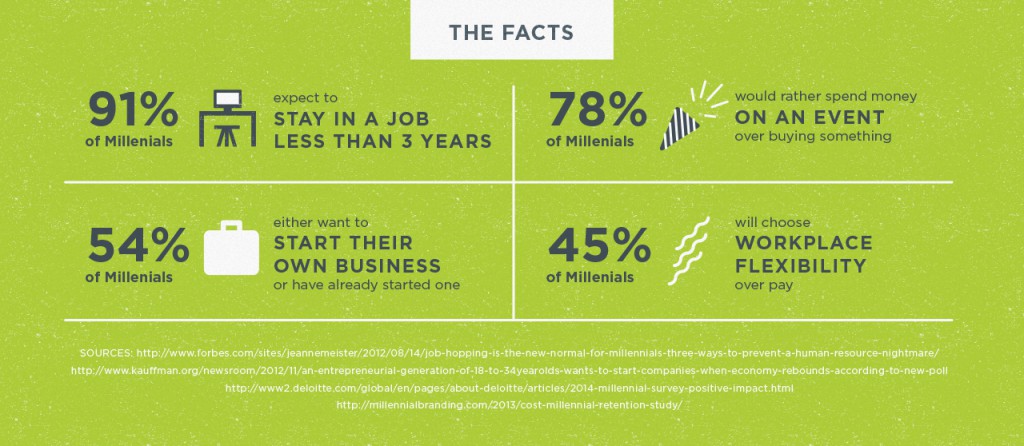 are much more entrepreneurial than previous generations probably driven by witnessing the dotcom boom and also fueled by a greater level of self-confidence than previous generations due to parents showering them with praise. This entrepreneurial spirit is also self-serving and driven by their need to control their own destinies and not be tied to a job or organization because they wish to have more work life balance. They truly value experiences and would rather their 9 to 5 not impede their ability to enjoy those experiences.
are much more entrepreneurial than previous generations probably driven by witnessing the dotcom boom and also fueled by a greater level of self-confidence than previous generations due to parents showering them with praise. This entrepreneurial spirit is also self-serving and driven by their need to control their own destinies and not be tied to a job or organization because they wish to have more work life balance. They truly value experiences and would rather their 9 to 5 not impede their ability to enjoy those experiences.
Millennials have great respect for those they see as power brokers and or experts in the field. Older generations often see their need to be attached to social media as an inability to have their own social circle or communicate effectively. This is half correct. Through the use of social media, Millennials have created unlimited social circles for themselves; albeit many are not of benefit to them. However, it is a connection and that is what is important to them. It connects them to someone they admire or a cause they believe in. So they will slavishly follow the Kardashians or any other current social media darling because they see them as referent power.
What employers and educational institutions must do is allow Millennial students and employees to connect with persons within their organizations as mentors because they then become the referent power for the Millennial.
With all these great things about Millennials; however, there are some areas in which they are deficient when compared to their previous generational counterparts. It then becomes the role of schools and employers to find ways to help to bridge those gaps in order to ensure that the skills gap that employers complain about is closed allowing Millennials to take their rightful place in the marketplace as Boomers and Gen Xers exit.
Millennials and future employment
The top 10 things that employers seek in order are: Leadership skills, Ability to work as part of a team, Strong written and verbal communication skills, Decision making and problem-solving skills, A good work ethic, Technical Skills, Initiative, Digital Literacy Skills, Professionalism: Specialized Knowledge, Honesty, Integrity, Accountability, Self-Regulation, and a Healthy Self Image.
Core to Millennials are (a) the ability to work as part of a team, (b) technical skills provided that they have done the requisite training, (c) digital literacy skills and (d) a healthy self-image. The areas of leadership, work ethic/initiative, communication skills and professionalism are the missing pieces that employers refer to as lack of soft skills within the Millennial demographic. It, therefore, becomes imperative that educational institutions build these skills into their programs if they wish to satisfy employers.
Educational institutions can do this in a variety of ways. First and foremost, curriculums should focus on problem-solving initiatives. An example would be providing the students with a problem/issue at the start of class which needs to be resolved. The class is then broken down into groups and each person within the group is assigned a role including Team Lead and Presenter. Each student should have an opportunity within the duration of the course to assume each role. By using this problem-solving strategy, over the course of a term, each student build skills in team building, collaboration, leadership, presentation and problem-solving. Over the course of time, this becomes a technique that the student incorporates into their thought and decision making process thereby building a new skill set. At the end of the course, post tests will determine how many of these attributes students have gained.
There is no quick fix for Millennials, employers and educational institutions to begin singing Kumbaya with each other. But it is critical for everyone to realize that this is the largest demographic in the U.S. and soon to be the largest demographic in the workforce. They are ultimately in control. As such, employers and educators must work collaboratively for there to be any hope of closing the skills gap and ensuring that Millennials are the desired employees within the current marketplace. To accomplish this, there are three (3) key areas in which employers and educators must focus.
- Personal
- Academic
- Life skills
The following table shows how employers and educational institutions can help to increase these skill sets in Millennials.
| Business | Academic | |
| Personal | Employers should use mentors to develop missing skill sets within the Millennial demographic | Schools should implement team-based exercises, speech requirements and collaborative tasks within curriculums to help build leadership skills |
| Academic |
|
|
| Life Skills | Align employees in areas of compatibility Ensure culture fit |
Recognize them for meeting goals and targets |
Millennials are here to stay! They are the largest demographic in the United States and in the world. They are young, bright and energetic and they are the future. They are great assets which the world must harness and use. Employers and educators must form collaborative teams to solve the shortcomings which they have. Of course time is the greatest teacher and Millennials will eventually either conform to the standards … or more likely create their own!
Resources
- http://www.marketingcharts.com/traditional/so-how-many-millennials-are-there-in-the-us-anyway-30401/
- http://www.bls.gov/news.release/pdf/jolts.pdf
- http://www.hgtv.com/shows/tiny-house-hunters, http://www.hgtv.com/shows/tiny-house-big-living
- http://www.fastweb.com/college-scholarships/articles/scholarships-and-internships-for-gamers
Dr. Morrison-Williams, in her capacity as the Vice President of Academic Affairs for City College, is responsible for the development and deployment of curriculum, student persistence, student success, student satisfaction, regulatory compliance, accreditation, faculty development as well as interfacing with Career Services on student placement after graduation. Dr. Morrison-Williams has worked in this capacity at City College since September 2009. She has two degrees from FIU. A Bachelor’s in Communication with a specialization in Public Relations (1993) and a Master’s in Public Administration (1997). In 2015, she earned an Ed.D in Organizational Leadership from Argosy University. Her area of specialization for her dissertation was mentorship and the African-American female professional.
She has most recently taken on the role of not only academic management of City College’s online programs, but also developing a new online learning module. Prior to joining City College in 2009 as the VP, she had worked with the company between 1997 and 1999 as a faculty member. Additionally, she has worked at Florida International University and The Art Institute of Fort Lauderdale, part of the EDMC system. She has worked as a Registrar, faculty member, Department Chair, Faculty Development Director, Assistant Dean and Associate Dean.
Dr. Morrison-Williams is a transplant from the island of Jamaica and resides in South Florida with her husband and son.
Contact Information: Suzanne Morrison-Williams, EdD // Vice President – Academic Affairs // City College // 954-492-5353 // smw@citycollege.edu // https://www.linkedin.com/in/suzanne-morrison-williams-7467b07?trk=hp-identity-name

